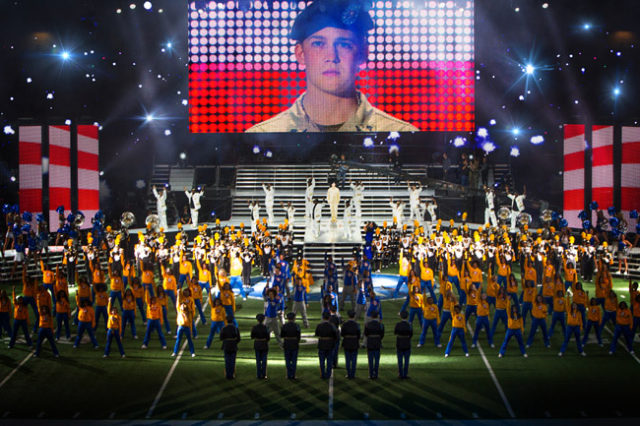In Billy Lynn’s Long Halftime Walk, director Ang Lee tries something radically different. But why make a film that nobody can see in the way he intends?
When the latest film from a director like Ang Lee gets a limited distribution, the immediate question is “why?” Especially when you know that Billy Lynn’s Long Halftime Walk got the thumbs down from American critics and cinemagoers. And even more so when you realise that the two aren’t connected.
First, that distribution question. The answer’s a techy one. Lee’s built his reputation on pushing boundaries and challenging accepted methods of filmmaking – think of those special effects in Life Of Pi– and here he’s doing it again. But in such a way that it throws down a challenge to the entire movie world – studios, distributors and cinema chains. According to Lee himself, there isn’t a cinema that can actually show the film in the way he wants it to be seen, because nobody has the right equipment. Those able to show it have something close, but it still falls short of what he had in mind. But don’t let that put you off.
Related: Billy Lynn’s Long Halftime Walk Trailer
As for its lukewarm reception in the States, it’s nothing to do with the way the film’s been made, more a reflection of the current political climate and some genuine shortcomings in its storytelling. Based on the best-seller of the same name, we see events through the eyes of young private Billy Lynn, an Iraq hero who returns home with the members of his squad for a victory tour. As the Thanksgiving ball game which is a culmination of their visit approaches, the audience comes to understand what really happened to the squad through Billy’s memories, flashbacks and reactions to what’s happening around him.
As an anti-war movie, it wears its heart loud and proud on its sleeve, showing the traumatic after-effects of battle on the soldiers and trivialising the razzamatazz of the ball game. Lee’s intention was to create an immersive experience, so you could see inside somebody’s head. And his technique is largely successful: the camera is even more penetrating than usual, creating an intimacy and a level of detail that makes the audience feel they’re also up there on the screen, inside every frame with the actors. But it’s an achievement that has its downsides.
The style in which some of the characters are presented doesn’t fit. While Billy’s fellow soldiers, the Bravo Boys, are realistic, others are meant to be caricatures or just part of Billy’s fantasies. So, cheerleader Faison (Makenzie Leigh), who attracts his attention, is beautiful, feisty and far too perfect for words. Steve Martin’s businessman is as slippery as an eel, an amalgamation of the wheeler-dealers we’ve seen in many other movies. And when we’re presented with something that genuinely isn’t real, it sticks out like a sore thumb. At the ball game, the big halftime act is Destiny’s Child – it’s 2004 – and at one point we’re in the wings behind Beyonce as she waits to go on. Except we never see her face, just the back of her head and it clearly isn’t her. It jars.
The weight of the film falls on the shoulders of British actor Joe Alwyn, who was still at drama school when he was cast in the role. Hardly ever off the screen, he effortlessly handles a Texan accent and does a generally impressive job. And being an unknown face is a definite advantage.
Billy Lynn’s Long Halftime Walk will create interest for technical reasons and for the way it portrays public expectations of the military. But, for the time being, anyway, it also runs the risk of being tucked away to gather dust while the rest of the film industry catches up with it. For now, if you can see it in 3-D, then go. If you can’t, think twice and consider waiting until cinemas can show the film Lee has actually made. Good things are worth waiting for.
Billy Lynn’s Long Halftime Walk is in cinemas from Friday, 10 February.

